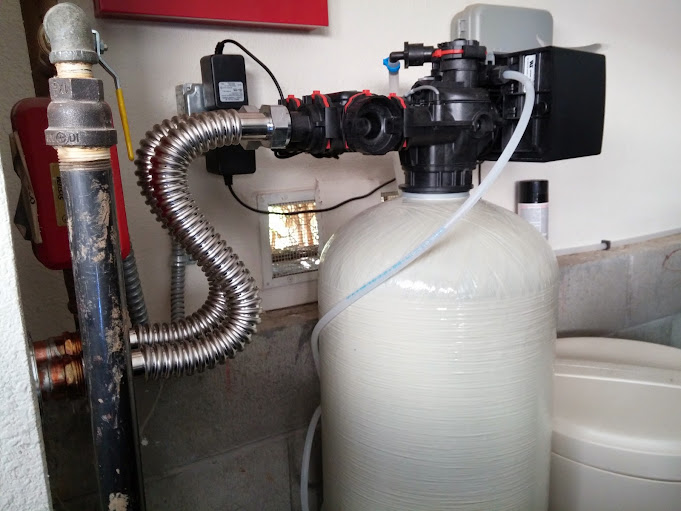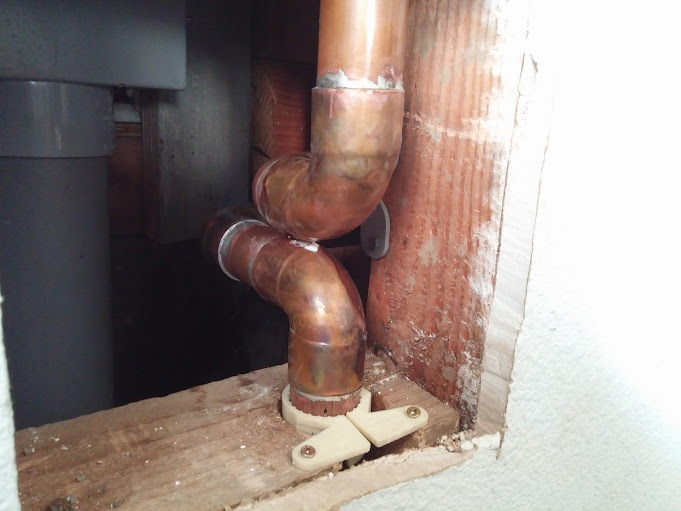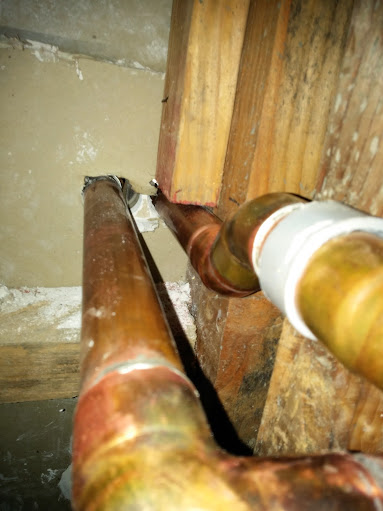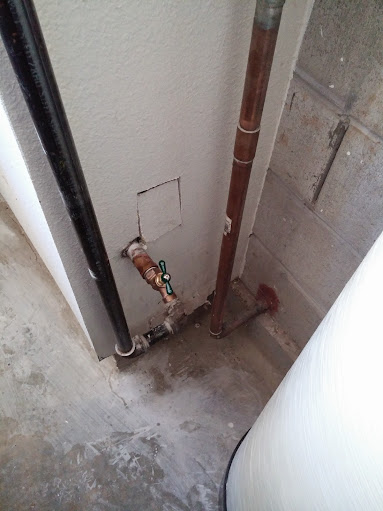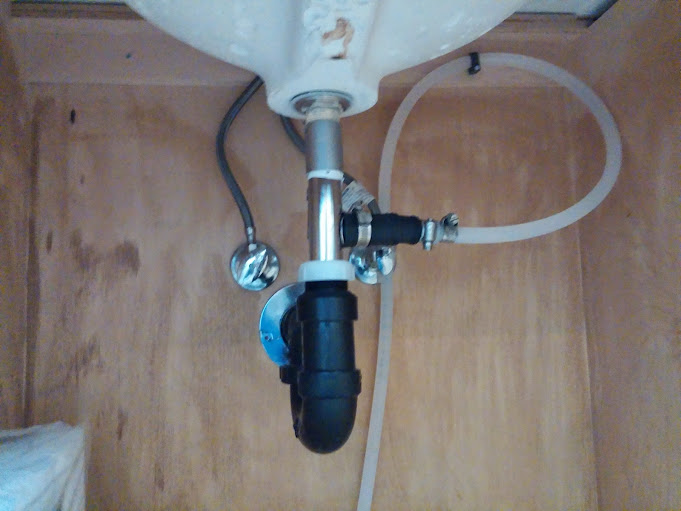Nezil
Member
I'm currently renting a property that I'm trying to purchase, and one of the things that we've wanted to do since moving in is to install a softener. As soon as we own the place, we'll be in a position to do this, and I've been trying to work out sizing and equipment in advance.
Initially, I had considered one of the one-cabinet solutions from the local hardware store, but a little research has led me to consider a setup based around a Fleck control valve.
One of the things that I really like about the Fleck valves, is that it's relatively easy to switch out the input connectors for different sizes, and even different threads. I'm currently living in California, but I'm actually British, and there is always the chance that I might move back, so it's comforting to know that BSP input connectors are available if I need them.
I'm going to be doing the installation myself, and I have a few questions about that, but I'll start with the sizing...
Looking at the last year of water bills, I can see that my family uses 11ccf (8228 Gallons) of water on average per month. This equates to approximately 270 Gallons per day.
We have an RO filter for drinking water already installed, and when setting this up I purchased a TDS meter to check that it was working correctly. At the time I installed the RO filter, roughly 3 years ago, I measured the incoming TDS at around 550ppm. When I measured it this morning, it was more like 850ppm!
I realise that TDS is not the same as hardness, but the only other information that I have to go on is the data from the water supply company (California Water - Los Altos Suburban District). This data suggests that the hardness ranges from 260-440ppm, with an average of 329ppm; TDS ranges from 350-570ppm, averaging 437.
The data also shows that some readings for Iron were as high as 460ppb, with an average of 27 - I've not noticed any Iron staining or taste in the water, so I think I'm OK for Iron.
One of the big problems with the water supply here, is that the source that it comes from is changed throughout the year. Sometimes water is purchased for a nearby utility, and at other times it is sourced from the primary groundwater supply. I have a feeling that since California is having an extended drought, that the hardness is increasing, but my point is simply that the hardness (and all other parameters) are changing throughout the year!
If I calculate that size of my softener based on my TDS reading of 850ppm ( / 17.1 = 50 grains per gallon), I'm going to need 108,000 grains of capacity to get me through a week with a day to spare; that's a HUGE system, particularly for a utility supply.
If I calculate based on the average that the supply company believes I should be receiving 329ppm ( / 17.1 = 20 Grains per gallon), I'll only need 43,200 grains for the week.
I know that flow rate should also be considered, so I checked the fastest faucet in the property, and measured this at nearly 6 gallons per minute.
I was thinking that I could go with a 2.0' cuft system that should provide a constant SFR of 13 gpm, and a capacity of 64,000 grains at 15lb / cuft regeneration. This wouldn't provide me with the capacity for a week if my water truly does have 850ppm of hardness, but it's still a pretty large system.
My questions therefore are:
I do also have some installation questions, but I'll come on to those after I've decided on the system I'm going to be purchasing / installing.
Thanks in advance for the help!
Initially, I had considered one of the one-cabinet solutions from the local hardware store, but a little research has led me to consider a setup based around a Fleck control valve.
One of the things that I really like about the Fleck valves, is that it's relatively easy to switch out the input connectors for different sizes, and even different threads. I'm currently living in California, but I'm actually British, and there is always the chance that I might move back, so it's comforting to know that BSP input connectors are available if I need them.
I'm going to be doing the installation myself, and I have a few questions about that, but I'll start with the sizing...
Looking at the last year of water bills, I can see that my family uses 11ccf (8228 Gallons) of water on average per month. This equates to approximately 270 Gallons per day.
We have an RO filter for drinking water already installed, and when setting this up I purchased a TDS meter to check that it was working correctly. At the time I installed the RO filter, roughly 3 years ago, I measured the incoming TDS at around 550ppm. When I measured it this morning, it was more like 850ppm!
I realise that TDS is not the same as hardness, but the only other information that I have to go on is the data from the water supply company (California Water - Los Altos Suburban District). This data suggests that the hardness ranges from 260-440ppm, with an average of 329ppm; TDS ranges from 350-570ppm, averaging 437.
The data also shows that some readings for Iron were as high as 460ppb, with an average of 27 - I've not noticed any Iron staining or taste in the water, so I think I'm OK for Iron.
One of the big problems with the water supply here, is that the source that it comes from is changed throughout the year. Sometimes water is purchased for a nearby utility, and at other times it is sourced from the primary groundwater supply. I have a feeling that since California is having an extended drought, that the hardness is increasing, but my point is simply that the hardness (and all other parameters) are changing throughout the year!
If I calculate that size of my softener based on my TDS reading of 850ppm ( / 17.1 = 50 grains per gallon), I'm going to need 108,000 grains of capacity to get me through a week with a day to spare; that's a HUGE system, particularly for a utility supply.
If I calculate based on the average that the supply company believes I should be receiving 329ppm ( / 17.1 = 20 Grains per gallon), I'll only need 43,200 grains for the week.
I know that flow rate should also be considered, so I checked the fastest faucet in the property, and measured this at nearly 6 gallons per minute.
I was thinking that I could go with a 2.0' cuft system that should provide a constant SFR of 13 gpm, and a capacity of 64,000 grains at 15lb / cuft regeneration. This wouldn't provide me with the capacity for a week if my water truly does have 850ppm of hardness, but it's still a pretty large system.
My questions therefore are:
- Is there any need to choose a Fleck 7000SXT over a 5600SXT if my incoming lines are 1" and I don't need any more flow than 13gpm?
- Are my calculations correct?
- Which resin should I use? There appears to be several types available, and it's not clear which type I'd be best to use
- Is it important to have a gravel bed at the bottom of the tank?
- Is there no system which measures that output hardness to decide if a regeneration is required, rather than just calculating based on flow?
- How are situations where the water quality is changing usually handled?
- Is it really possible that my water is that bad (850ppm TDS!)
- What is the relationship between TDS and hardness, and how is hardness calculated from TDS or measured?
- How is the size of brine tank calculated, and what are my options here?
I do also have some installation questions, but I'll come on to those after I've decided on the system I'm going to be purchasing / installing.
Thanks in advance for the help!

